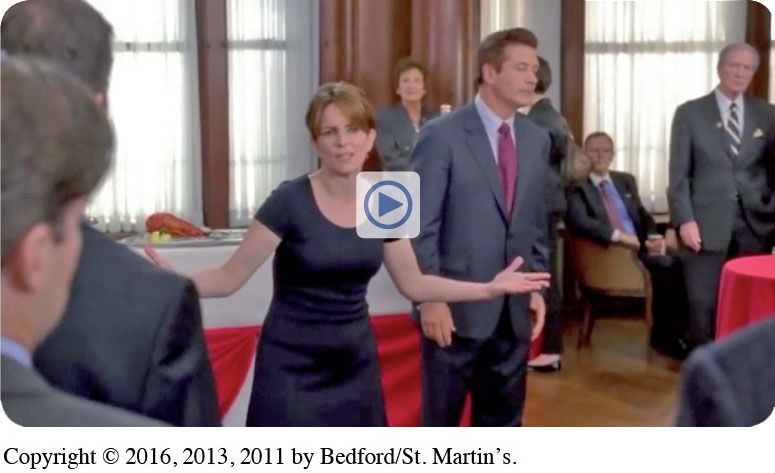CONVERGING MEDIA Case Study: Comcast Extends Its Reach
CONVERGINGMEDIACase StudyComcast Extends Its Reach

Convergence and accompanying concerns about possible monopolies are not new to the mass media landscape. But some corporate behemoths push the envelope of what is possible in the current digital media world. One such company is Comcast. Started in the 1960s as a small cable company serving just over a thousand subscribers, Comcast has grown those numbers to almost twenty-two million. But Comcast is hardly just a cable company anymore. As the government has relaxed its rules about competition and ownership, Comcast has become the largest video, Internet, and phone provider in the United States—and its reach exceeds even those services. Comcast’s biggest recent purchase was NBC Universal, meaning that a single company not only owns the wires that bring programming into over twenty million homes but also owns NBC and its affiliated networks, a substantial number of cable stations (Bravo, E!, Golf Channel, MSNBC, Oxygen, USA, the Weather Channel), Telemundo, the online TV service Hulu, almost a dozen broadcast TV stations in the nation’s largest cities, Universal Pictures, and Universal Studios theme parks. In 2014, Comcast expressed interest in merging with fellow media giant Time Warner Cable, although opponents have asked the Federal Communications Commission to block the move.

macmillanhighered.com/mediaessentials3e

 Visit LaunchPad to watch a scene from 30 Rock that parodies the reach of cable companies. How might 30 Rock’s parent company have affected the writers’ satire?
Visit LaunchPad to watch a scene from 30 Rock that parodies the reach of cable companies. How might 30 Rock’s parent company have affected the writers’ satire?
What does this mean for the average consumer? Considering all of the ways a megamedia corporation like Comcast interacts with consumers could take an entire book of its own; instead, we will briefly consider the hypothetical merger with Time Warner Cable. A Comcast press release claims the merger would create “a company that delivers maximum value for our shareholders, enormous opportunities for our employees and a superior experience for our customers.”1 On the other hand, media watchdogs argue that despite those friendly words, corporations exist to maximize profits, and this means a push toward monopolization and away from consumer choice and satisfaction. A 2014 survey by the American Customer Satisfaction Index seems to support the critics, ranking Comcast and Time Warner as the worst in terms of customer satisfaction among major Internet providers.2
The picture is about much more than customer service. Not only is Comcast Corporation the largest cable operator and largest home Internet service provider (ISP) in the United States, but it is also listed by political watchdog Web site OpenSecrets.org as a “heavy hitter.”3 That means it is among the top 140 overall donors to federal elections since 1990, spending over $20 million in contributions to political campaigns and over $120 million in lobbying. In addition to the proposed merger, Comcast is also mobilized to oppose strong net neutrality protections, including those called for by President Obama in late 2014. With Comcast’s deep pockets and powerful control of several media outlets, including one of the Big Three news networks, advocates for greater ownership diversity and net neutrality have their work cut out for them.
13
Throughout this book, we consider how the digital turn and media convergence have changed the way we consume media—and also the way we connect with others. A more converged business model offers more profits to those companies that downsize their workforce while increasing their media holdings in many markets. But although it’s easy to see the benefits for media owners, this model presents serious disadvantages for society. For one thing, it limits the range of perspectives from which messages are delivered, as media content becomes concentrated in fewer and fewer hands. For instance, as conglomerates buy up more and more newspapers and employ fewer reporters, citizens are exposed to a narrower range of interpretations of news events. Simultaneously, media owners’ personal biases and interests (in culture, politics, and economics) gain more influence, because the content they control gets disseminated more widely than content controlled by smaller companies or media outlets.
Convergence also affects which companies have the greatest economic power. Whereas much media content is still produced by traditional media industries (the music industry, the film industry, the publishing industry, and so forth), distribution channels have expanded to include a great variety of services and devices. This in turn has caused an ongoing economic shift, in which cable and Internet providers, cell phone companies, and digital retailers like Amazon and iTunes receive a greater share of the money spent on media consumption, while traditional outlets like movie theaters, book stores, and record labels may struggle. Media consumption still absorbs a massive amount of time and money, but convergence ensures that this time and money will be flowing in new and different directions.